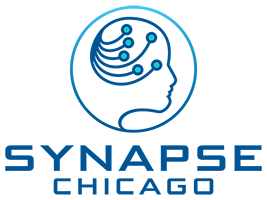traumatic brain injury: the road to recovery
How does neurofeedback help those with mild traumatic brain injuries?
Injuries to the brain can either be structural or functional. Structural injuries involve physical damage to the brain and can be detected with MRI or CT imaging techniques. But functional injuries, which involve the changes in the timing of the brain’s electrical activity can only be detected using a quantitative electroencephalogram or QEEG. This important tool is used in neurofeedback to measure the effects of a brain injury on the timing of specific brainwaves.
Paul Swingle, a Canadian psychoneurophysiologist, noted that 90% of brain injuries are detected by QEEG and only 20% can be identified by MRI or CT scan. Even if the physical damage to the brain has healed, brain dysregulation may persist. Neurofeedback is a non-surgical, non-drug approach for correcting the effects of traumatic brain injuries. It helps clinicians pick up subtle deviations in brainwave patterns that might indicate injuries to the brain. It then alters this abnormal brain activity by encouraging the brain to self-regulate.

Start healing your brain naturally
Traumatic brain injury (TBI) is a sudden disruption in the normal function of the brain which can be caused by a blow or jolt to the head, as in a fall or sports injury; whiplash from a car accident; or penetrating head injury. Brain injuries can range from mild to severe and is a prevalent problem in the military and sports.
Mild traumatic brain injuries often go unnoticed, and they can last for days, weeks, months, or years. Common symptoms include dizziness, headache, fatigue, changes in concentration, visual problems, and emotional disturbances. When left untreated, mild TBI can lead to severe health issues.
What happens during a traumatic brain injury
An impact to the head causes the brain to crash back and forth inside the skull. Billions of nerve fibers that make up the brain can be twisted, stretched, or torn. The first injury occurs at the moment of impact and is known as the primary injury. The second injury happens when the brain is starved of oxygen, which is more damaging than the primary injury.
About 70-80% of all traumatic brain injuries are mild. The updated version of the Diagnostic and Statistical Manual of Mental Disorders (DSM-5) places minor brain injuries under Neurocognitive Disorders. Mild TBI was previously placed under the Postconcussion Disorder category which has since been removed from the manual.

Treatment for mild traumatic brain injuries
Traditional treatment for this condition does not resolve the underlying brain injury. Mild cases are usually treated with rest and medications for headaches. It is important to note that many people will recall brain injuries that resulted in hospitalization or loss of consciousness, but they are less likely to remember mild injuries from sports, play, or minor car accidents. That’s why the symptoms of mild TBI are often ignored. Long-term consequences associated with mild traumatic brain injuries could last a lifetime. These may include impaired memory, attention problems, sexual dysfunctions, personality changes, aggression, and depression.
Synapse Chicago is here for you
recover from brain trauma with the help of neurofeedback
